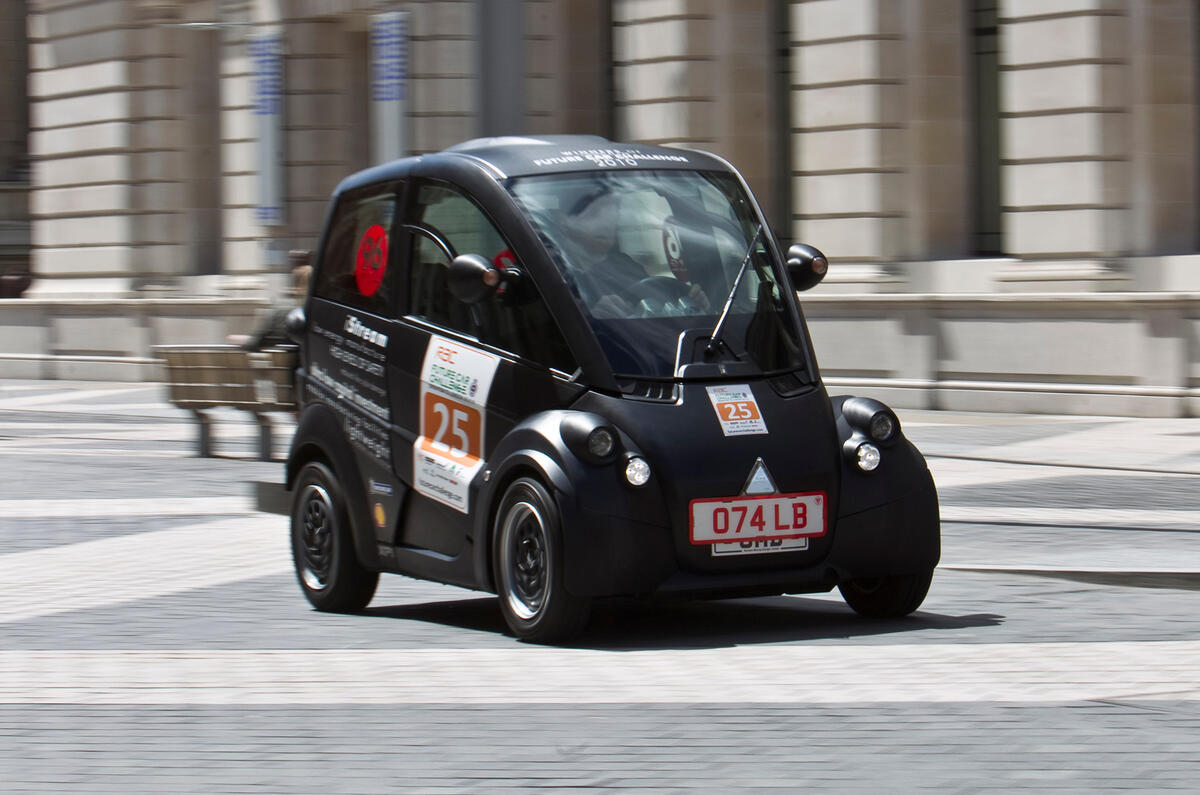Gordon Murray has raised the intriguing idea of a new lightweight city car engineering and taxation class that Britain could introduce in the post-Brexit landscape to cut congestion and pollution.
"We are so overdue a city car segment," said Murray. "I could draw up a set of regulations for a city car right now. Japan first introduced one back in 1959, that tells you something."
Brexit opens up the possibility of the UK creating fresh car segments in a new Type Approval legal regime, separate from the EU-wide system that has governed the industry for decades.
Murray sits on the Automotive Council, which brings manufacturers and legislators together, where he plans to advance the idea.
"I’ll certainly be pushing it," Murray said. "But the time has to be right. It’s too soon after the vote right now."
Murray’s city car formula would specify a compact footprint, a low kerb weight and an efficient, low-pollution powertrain. Its body structure would be more pedestrian-friendly in an impact, featuring a softer front structure, possible because the city cars wouldn’t be prioritised for high-speed driving.
Gordon Murray Design (GMD) has created a complete design and manufacturing system, called iStream, to simplify mass car production, and it has been demonstrated on a compact three-seat city car, the T25, which is just 2.4m long and 1.3m wide, while weighing 595kg. Its narrow width would allow two road lanes to be fitted into the same road space as a current single lane. Murray says the first car built with iStream will be on sale in 2019.
Yamaha, TVR and OX, a rugged cargo truck, are all using iStream.
A new city car legal class could open up a fresh market for lightweight, low-polluting cars such as the Murray T25 and the Riversimple Rasa fuel cell car.
GMD and Riversimple were recently honoured by the RAC with the Dewar Trophy and Simms Medal, awarded for outstanding technical innovation.
Murray also believes that breakthrough body-structure technologies are needed to reduce vehicle masses in order to hit future CO2 and tailpipe pollution targets.
"The industry has gone as far as it can with incremental improvements in engines and structures," says Murray.
"Now the mainstream manufacturers are starting to realise that the next generation of emissions rules are going to be very hard to comply with without light-weighting the body structure."






Join the debate
Add your comment
...and isn't the OX still just an idea?
first IStream car
first IStream car